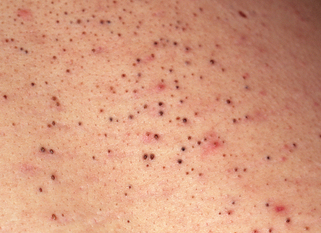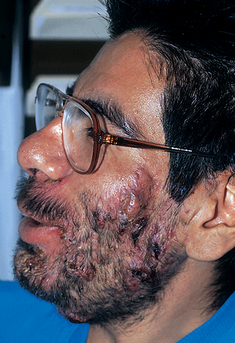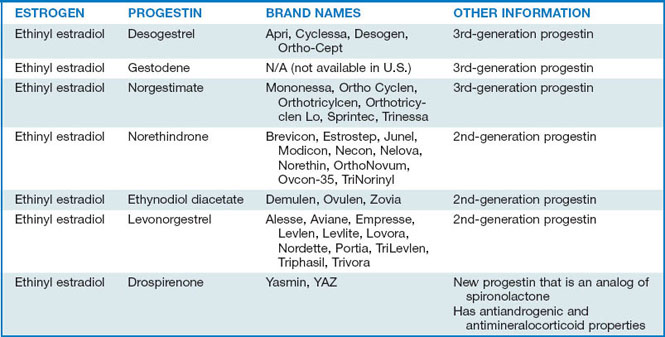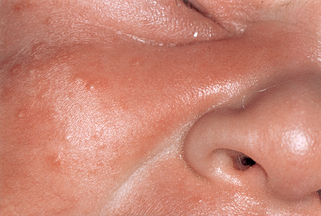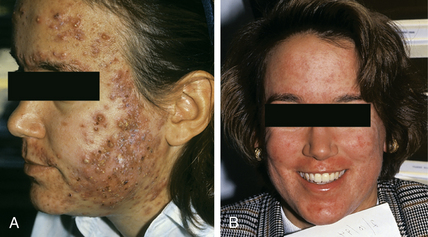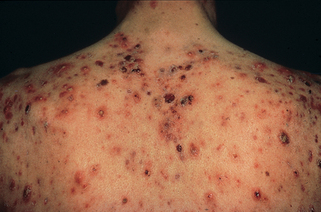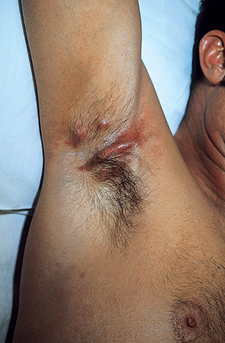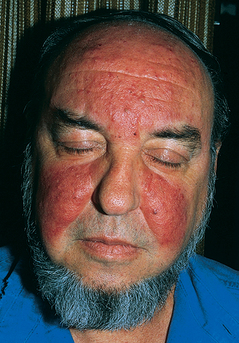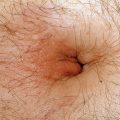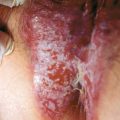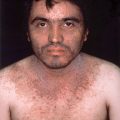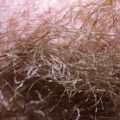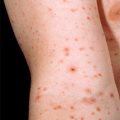Chapter 21 Acne and acneiform eruptions
Koo, JYM, Smith LL: Psychologic aspects of acne, Pediatr Dermatol 8:185–188, 1991.
Other topical treatments include benzoyl peroxide (BPo), topical antibiotics (erythromycin, clindamycin, and sodium sulfacetamide), α-hydroxy acids, salicylic acid, and azelaic acid. Antibiotic resistance of P. acnes has become more common. More than half of patients undergoing therapy with a topical antibiotic will develop resistance. No bacterial resistance has been reported with topical benzoyl peroxide. The following are recommendations for preventing bacterial resistance in the treatment of acne: combining antimicrobials with a retinoid and BPo, limiting the duration of antimicrobial therapy, not using antimicrobials as monotherapy, and avoiding concurrent use of oral and topical antibiotics, especially if chemically different.
Espersen F: Resistance to antibiotics used in dermatological practice, Br J Dermatol 139:4–8, 1998.
Other side effects of isotretinoin include dry skin, lips, and eyes, dry mucous membranes with nosebleeds, headache (including rare instances of pseudotumor cerebri), muscle and backaches, hypertriglyceridemia, increased liver function tests, and depression (see next question). These should be discussed in detail with the patient prior to starting therapy and documentation of the discussion made in the chart. There are also several case reports of inflammatory bowel disease (IBD) being triggered by isotretinoin use. A review of adverse events reported to the United States FDA Medwatch scheme over a 5-year period (1997 to 2002) revealed 85 cases of IBD, of which the causal association with isotretinoin was considered probable or highly probable in 73% of cases.
Several laser devices have been employed and studied in the treatment of acne. There are a few small studies evaluating the 1450-nm diode laser was used to target and destroy sebaceous glands. Due to differences in treatment regimen and other allowed acne treatment, no comparisons can be made between studies.
Key Points: Acne
| Steroid hormones Topical corticosteroids Systemic corticosteroids Anabolic steroids Some progestins Testosterone Antidepressants Lithium Amineptine Antiepileptic drugs Phenytoin Trimethadione |
Halogens Iodides Bromides Halogenated hydrocarbons Antituberculous drugs Isoniazid Miscellaneous drugs Thiourea Thiouracil PUVA |
PUVA, Psoralen plus ultraviolet light, type A.
Plewig G, Jansen T, Kligman AM: Pyoderma faciale, Arch Dermatol 128:1611–1617, 1992.

